Banning House and Museum
Introduction
Text-to-speech Audio
Phineas Banning, the founder of Wilmington, had this Greek Revival-style mansion built from 1863 to 1864. The 3.5-story, 23-room, wood-frame house on a brick foundation contained a ballroom in the basement and was topped by a cupola. The mansion is still in its original location and is surrounded by roughly 20 acres of grounds where General Banning once grew eucalyptus trees. The City of Los Angeles Department of Recreation and Parks managed the grounds as parkland (Banning Park) since 1927, when the property was deeded to the city. The Banning House became a historic house museum in 1936. It was added to the National Register of Historic Places in 1971. The Banning Museum in the restored mansion includes some of the original furnishings donated by the Banning family along with exhibits on local history. Guided scheduled tours are offered for a suggested donation of $5 for adults and $1 for children; reservations are not required.
Images
Front of Banning House in 2008 photo (Los Angeles)
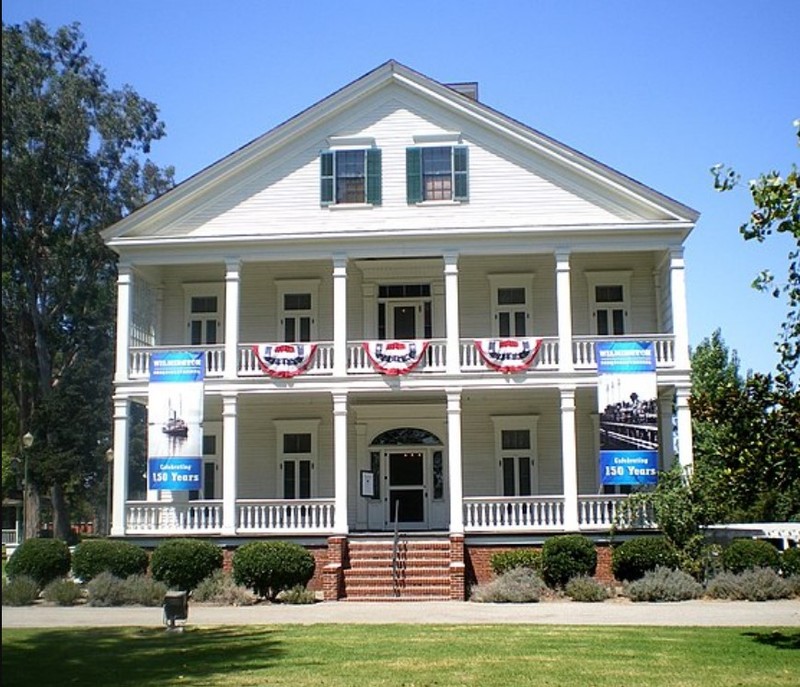
Front of Banning House in 1962 photo (California Historical Landmarks Advisory Committee)
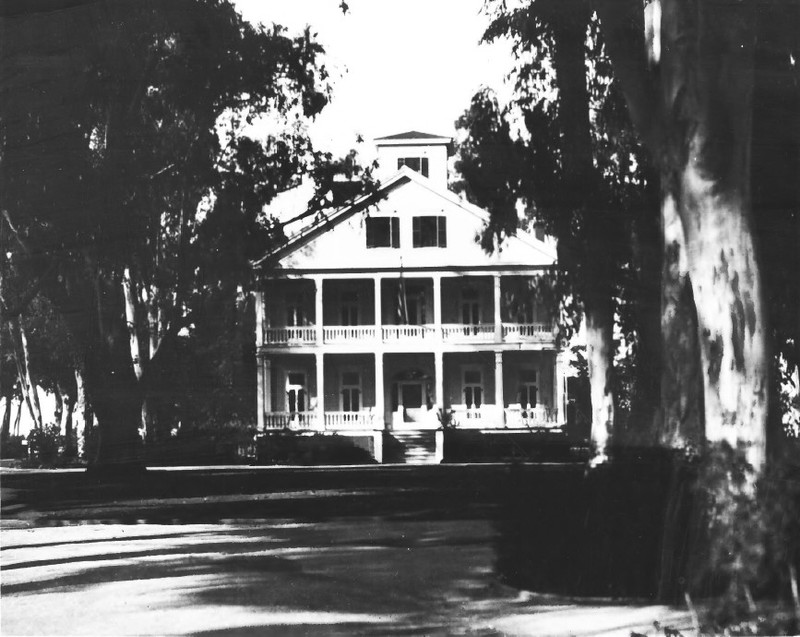
South & west sides of Banning House in NRHP photo (ca. 1970)
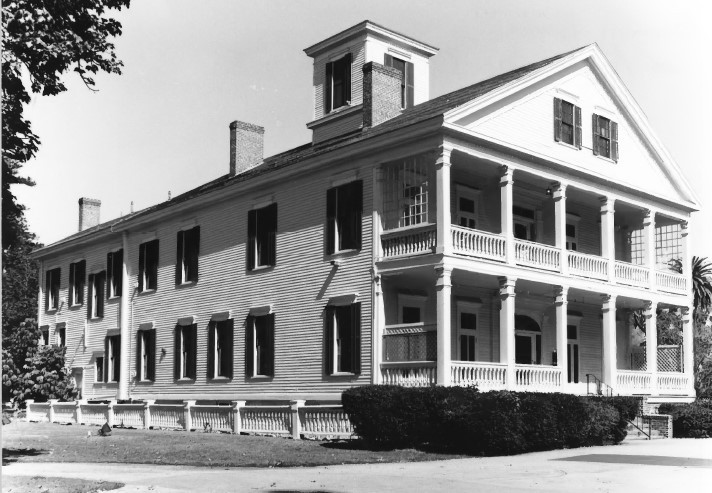
East side Banning House and rear additions in NRHP photo (ca. 1970)
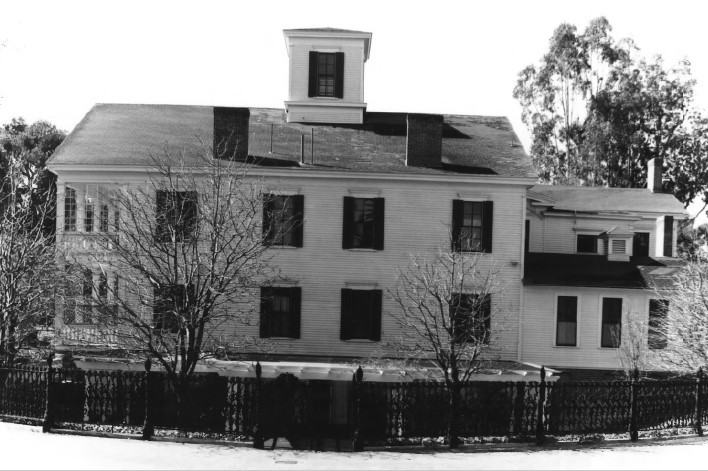
Interior view of first floor parlor of Banning House in HABS photo in 1995 (Tavos Olmos)
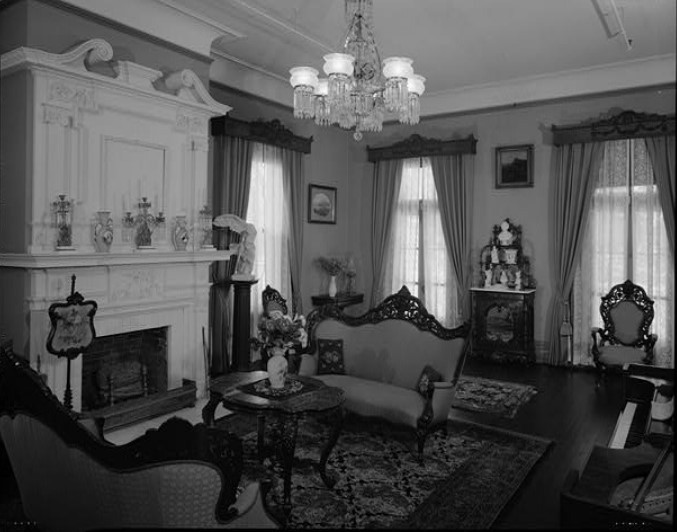
Town of Wilmington (white circle) on 1888 map of L.A. County (V.J. Rowan)
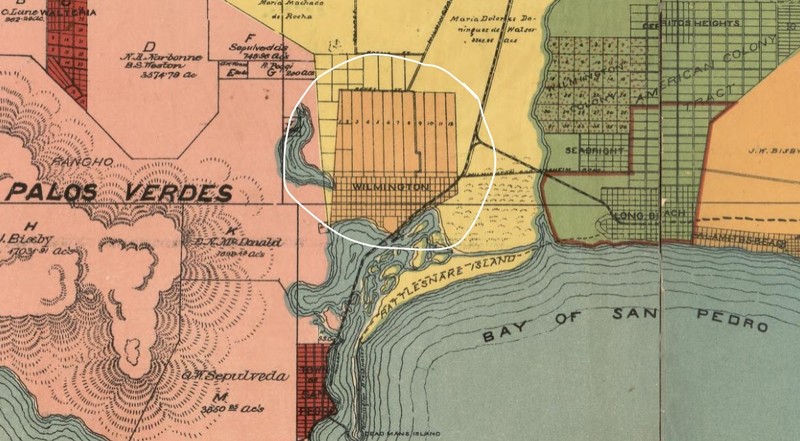
Backstory and Context
Text-to-speech Audio
Phineas Banning was born in Wilmington, Delaware in 1830 and was the ninth of eleven children. In 1851, he moved to Southern California and worked in the shipping business. He hauled freight and passengers between the harbor at San Pedro and Los Angeles and was a partner in the firm of Alexander and Banning. Banning is credited as being the founder of the town of Wilmington, which he reportedly named after his birthplace.
Banning married Rebecca Sanford, a native of Missouri. In 1854, his brother-in-law, William Sanford and several other pioneer settlers purchased 2,400 acres along the Pacific and several miles inland that had been part of the Dominguez Rancho San Pedro. Banning was instrumental in establishing a new town, warehouses, and a wharf within the tract, which was originally called New San Pedro. Opening ceremonies for the new wharf were held on October 1st, 1858. Although California residents voted for Abraham Lincoln for president in 1860, Southern Californians tended to be Southern sympathizers. General Banning was pro-Union and anti-slavery; he helped found the Union Club in L.A. A newly elected Republican Governor appointed Banning a Brigadier General in the 1st Brigade, California militia during the Civil War; the troops were not called into active military service.
Banning had the mansion on M Street built for his growing family from about 1863 to 1864; the architect is unknown. The front of the house faced south and featured a two-story balconied porch. Banning was described as a "shrewd and genial man" and "a royal host, given to lavish entertaining." His company won a number of federal government contracts, including hauling freight to Fort Tejon. Rebecca Banning died in 1868 after the birth of their eighth child. Banning's second wife was Mary E. Hollister, whom he married in 1870. Mary was a wealthy heiress from a prominent ranching family. In the 1870 census, Phineas (age 40) worked as a commission merchant and owned real estate worth $40,000 and $70,000 in personal property. Mary (24) was a native of Ohio. The Banning children at home were William (11), Joseph B. (8), and Hancock (5). Three domestic servants also occupied the Banning home: Kate Hopkins (30), Mary Richards (50), and Luisa Bowman (12).
A local directory printed in 1875 described General Banning's house as one of the most tasteful residences in the town of Wilmington. Wilmington was incorporated in 1871 in Los Angeles County and covered one square mile; the 1875 population was around 650. The nearby seaport served by the 1870s as the shipping port for the California counties of Los Angeles, San Bernadino, and Inyo, as well as parts of Arizona. A breakwater was built at the seaport by the U.S. Government in 1871. In 1880, Phineas and Mary resided in the home with the same three Banning sons (as in 1870) plus two daughters: Mary H. (9) and Lucy (4). A coachman and three servants also lived in the mansion: Wallace Packer (28), Charlie Oh (20), Hong Oh (35), and Anna Donahoe (26). General Banning died in 1885.
Some of the minor changes and additions to the mansion were made by later generations of Bannings who occupied the house until the 1920s, including replacing some of the original windows with French doors. The mansion is still in its original location and is surrounded by roughly 20 acres of grounds where General Banning once grew eucalyptus trees. The City of Los Angeles Department of Recreation and Parks has managed the grounds as parkland since 1927. The Banning House became a historic house museum in 1936. It was designated an L.A. Cultural-Historical Monument in 1963 and a National Register of Historic Places listing (including a carriage house) in 1971.
Sources
Almos, Tavos et al. HABS documentation of General Phineas Banning Residence, Wilmington, California. HABS No. CA-2660. Washington, DC. U.S. Department of the Interior, 1995ca.
Cameron, David G. Lee, Portia. Update of NRHP nomination of General Phineas Banning Residence, Wilmington, California. National Register. Washington, DC. National Park Service, 1993.
Paulson, L. L. Hand-Book and Directory of San Luis Obispo, Santa Barbera, Vertura, Kern, San Bernadino, Los Angeles & San Diego Counties. San Francisco, CA. L. L. Paulson and Francis & Valentine, 1875.
U.S. Census Bureau. Household of Phineas Banning in Wilmington Township, Los Angeles County, California, p.23, dwelling 323, family 339. Washington, DC. U.S. Government, 1870.
U.S. Census Bureau. Household of Phineas Banning in Wilmington Township, Los Angeles County, California, p.27, dwelling 272, family 316. Washington, DC. U.S. Government, 1880.
Walker, Caroline. Boyle Workman's The City that Grew, as Told to Caroline Walker. Edition 4th printing. Los Angeles, CA. Boyle Workman, 1936.
Warner, J. G. An Illustrated History of Los Angeles County, California. Chicago, IL. The Lewis Publishing Company, 1889.
Welts, Allen W. NRHP nomination of Banning House, Wilmington, California. National Register. Washington, DC. National Park Service, 1970.
https://en.wikipedia.org/wiki/Banning_House#/media/File:Banning_House,_Wilmington,_California.jpg
National Park Service (NPS): https://npgallery.nps.gov/AssetDetail/NRIS/71000160
NPS: https://npgallery.nps.gov/AssetDetail/NRIS/71000160
NPS: https://npgallery.nps.gov/AssetDetail/NRIS/71000160
Library of Congress (LOC): https://www.loc.gov/pictures/item/ca2250.photos.051031p/
LOC: https://www.loc.gov/item/2012590104/
